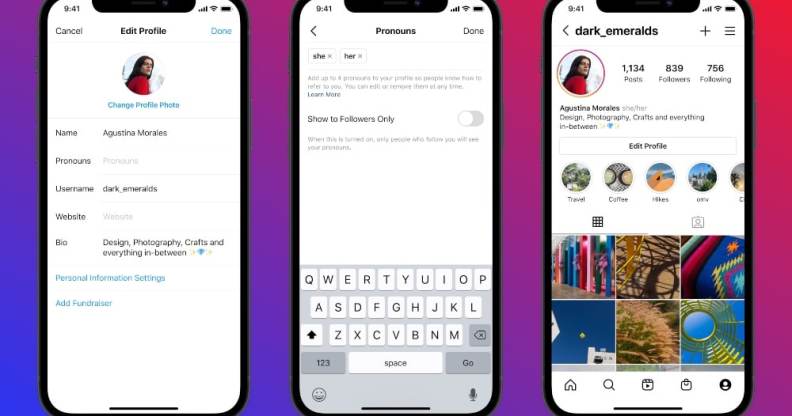Instagram finally introduces pronouns on user profiles. Here’s how to add yours

Instagram have rolled out a new way for people to list their pronouns on their profiles. (Instagram)
Instagram have rolled out a new way for people to list their pronouns on their profiles. (Instagram)
Instagram now allows for pronouns to be added to users’ profiles as part of a long-overdue update.
On Tuesday (11 May), select Instagram users woke up to a new pronoun section in their bios.
Users can now add up to four pronouns from a pre-selected list, which includes he, she, they, ze, xe, xem, ve, vir, vis, xyr and more, by hitting the “Edit Profile” button.
For those whose pronouns are not on the pre-written list, Instagram said people can fill out a form to have them added or whack them in their bio for the time being.
In a statement on its Twitter account, Instagram said the feature is, for now, only “available in a few countries, with plans for more”. At the time of writing, this appears to include at the least the US and the UK.
Pronouns appear next to the user’s name, and can be displayed publicly or to only a user’s followers – the latter being the default for those under 18.
Add pronouns to your profile ✨
The new field is available in a few countries, with plans for more. pic.twitter.com/02HNSqc04R
— Instagram (@instagram) May 11, 2021
The subtle but seismic move from one of the world’s top social media platforms signals the growing pivot of big tech towards inclusivity.
Instagram in particular has long been criticised for its muddled approach to LGBT+ rights: from briefly blocking queer hashtags to censoring trans bodies for no real reason.
It means that Instagram has at long last joined owner Facebook in allowing users to list their pronouns. The company launched the update back in 2014, but limited people to he/him, she/her and they/them.
Ride-sharing app Lyft and dating app OkCupid have also enabled users to add pronouns to their profiles.
Researchers have found that misgendering a trans person by using the wrong pronouns can cause increased dysphoria and mental health problems.
As well as this, it’s been found that consistently using the correct name and pronouns for trans folk drastically reduces their rates of anxiety, depression and suicidal thoughts to almost the same levels as their cisgender counterparts.

